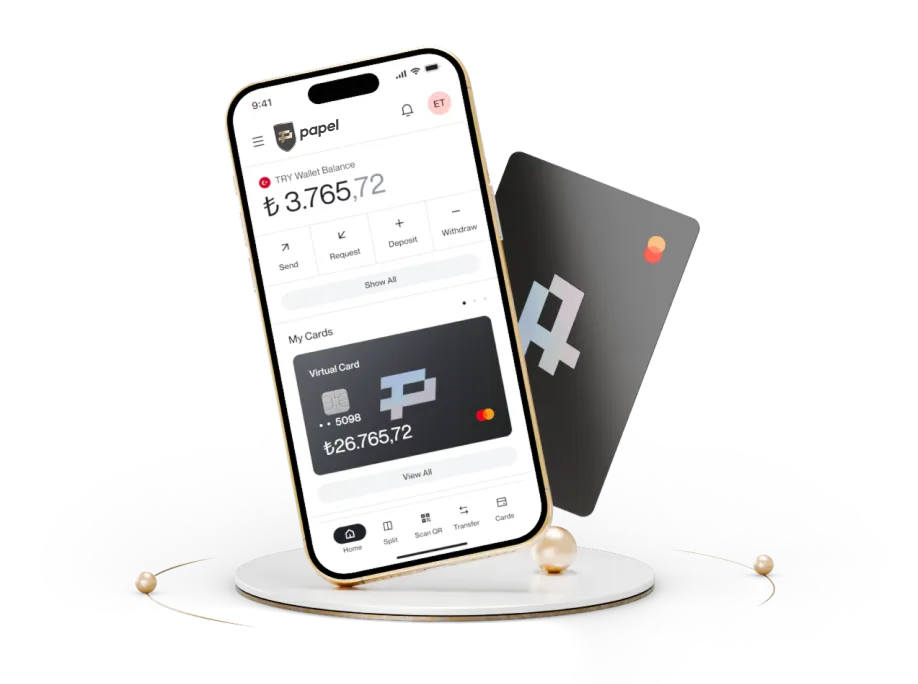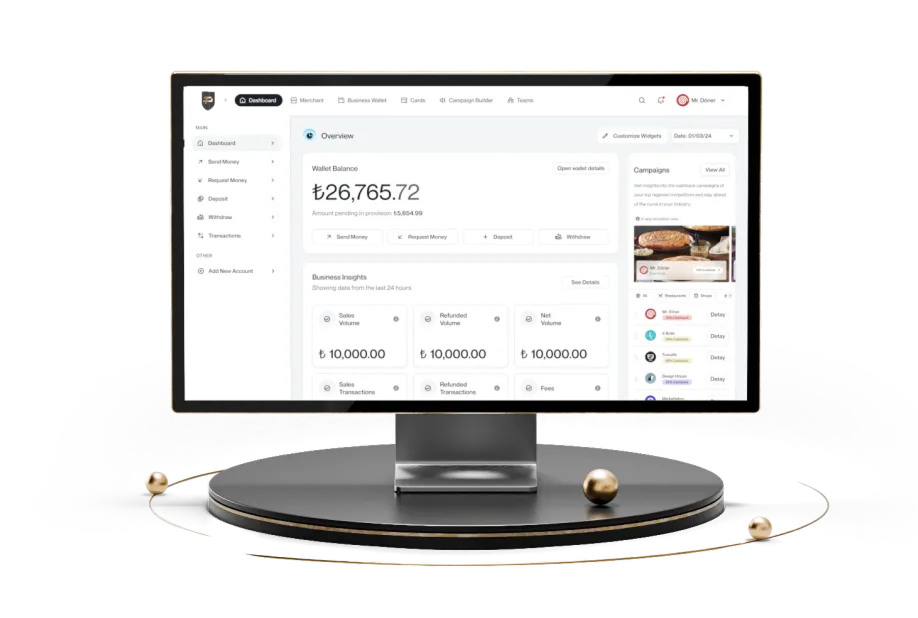Virtual Card or Physical Card? What You Need to Know Before Deciding
With the rise of online shopping, virtual cards have become more common in terms of security and expense management. So, what is a virtual card? How is it different from a physical card? What are its advantages and disadvantages? When should it be preferred, and what should be considered for secure shopping? You can find the answers to all these questions on Papel Blog!
What is a virtual card?
A virtual card is a digital version of a physical card and a payment method that provides convenience, especially when shopping online. As a unique card number is generated for each transaction, a virtual card protects actual card details, making secure payments possible. Typically created via mobile applications of banks or financial institutions like Papel, virtual cards can also be used for online purchases, digital content purchases, mobile payment systems, and processes like hotel or flight reservations.
Key differences between physical and virtual cards
Physical and virtual cards are two payment methods used for nearly the same purpose. The main difference lies in their form. As the name suggests, a physical card is a tangible card made of materials like plastic or metal and can be carried in a wallet; a virtual card, on the other hand, can be thought of as a card stored in a digital wallet. Another difference between the two lies in their usage areas. A physical card can be used in stores, restaurants, ATMs, and online shopping; a virtual card is used solely as an e-commerce payment tool for online transactions. Furthermore, cash withdrawals are not possible with a virtual card; they can be made with a physical card via ATMs.
These two cards also differ in terms of security. While the information on a physical card is static, virtual cards are considered more secure since they operate with temporary card numbers. In addition, physical cards, either obtained from bank branches or delivered via courier, offer long-term use. In contrast, virtual cards created instantly via mobile or internet banking are better suited for one-time or short-term use.
These two card types also differ in terms of limits and fees. Physical cards, whose limits are set by banks, may require an annual fee; however, virtual cards, where users can set a daily limit, are usually free. Each has advantages and disadvantages, so you should evaluate these features before use and choose the one that best suits your needs.
Advantages and disadvantages of virtual cards
Virtual cards, ideal for users who want to make online shopping safer and control spending, have many advantages. However, there can also be disadvantages to every beneficial feature. The advantages and disadvantages of virtual cards are as follows:
Advantages of virtual cards
Security: Since virtual cards allow you to shop without sharing your real card details, the risk of stealing your information is reduced.
Spending control: Virtual card users can set a specific limit for their cards, making it easier to manage their budgets.
Convenience and speed: Unlike physical cards, virtual cards do not require card printing or delivery so they can be used immediately after creation.
International use: As most virtual cards are valid on international e-commerce sites, they can be a practical solution for those wanting to shop from abroad.
No annual fees: Virtual cards are usually free, so users don’t have to pay extra fees like yearly dues.
Disadvantages of virtual cards
Limited usage: Virtual cards cannot be used in physical stores or ATMs and are restricted to online transactions.
Acceptance: Not all e-commerce sites accept virtual cards. As a result, users may face limitations while shopping.
Additional fees: Some banks may charge extra fees or commissions for using a virtual card, which could increase shopping costs.
Usage difficulty: Virtual cards have temporary numbers, so they may not work well for automatic payment instructions or subscriptions.

When should you prefer a virtual card?
Before opting for a virtual card to increase security and spending control in online shopping, it is essential to assess your needs and preferences. Here are valid reasons to consider using a virtual card:
Increasing security in online shopping
Virtual cards, which allow shopping without sharing physical card information online, create a unique card number for each transaction, reducing the risk of your information being stolen or misused.
Setting a spending limit
Users can set a specific spending limit on their virtual cards and shop accordingly, making it easier to manage their budgets. For example, if you have a child who plays games on your phone, creating a virtual card for their online purchases may be a wise decision. This way, you can protect your primary card and prevent high expenses.
One-time or short-term use
Virtual cards with one-time or short-validity card numbers can be an ideal solution for temporary needs. For instance, they can be used for subscription services or one-off campaigns.
Use in international shopping
Since most virtual cards are valid on international e-commerce sites and allow transactions in different currencies, they can be a practical solution for users who want to shop abroad.
If your physical card is lost or stolen
If your physical card is lost or stolen, you can create a virtual card quickly and continue shopping. This way, you won’t have to wait for your new card to be printed and delivered.
Tips for secure shopping with virtual cards
We’ve covered the advantages, disadvantages, and differences of the virtual and physical cards. Now, here are some valuable tips for using virtual cards that can help you shop online more safely:
Check your card limit
Setting your virtual card limit according to your shopping amount will minimize your losses in case of a security breach. We recommend regularly checking your card limit and expiration date to ensure everything is in order.
Regularly update your card details
To enhance the security of your virtual card, you should update it regularly. This reduces the chance of potential security gaps and lowers the risk of fraud.
Do not share your card details
You should never share details like your virtual card number, expiration date, and CVV code. Also, use your card only on reputable and well-known online stores.
Enable 3D Secure
The 3D Secure feature, an extra security layer for online shopping, will make your transactions safer. You can activate this feature through the mobile app or internet banking of your card’s bank or financial institution.
Sources: 1.
This blog post is for general informational purposes only and does not constitute legal, financial, or investment advice. The content has been prepared solely for informational purposes, and for any specific situation, you are advised to seek professional consultation. The statements in the article do not create any obligation or liability and reflect only the author's evaluations. Papel Elektronik Para ve Ödeme Hizmetleri A.Ş. assumes no responsibility in this regard. All decisions are at your discretion.

